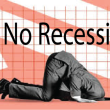by Flavio Carpenzano, AllianceBernstein
Despite the impact of COVID-19, euro fixed-income markets offer active investors attractive opportunities and worthwhile income.
Euro-area countries were struggling to achieve growth and inflation even before the coronavirus pandemic. Now global lockdowns and trade disputes have compounded their problems. Still, we believe euro fixed-income markets offer active investors attractive opportunities and worthwhile income.
Several key things are going right, in our view, with fundamental, technical and valuation factors all aligning to support euro bond investors.
Fundamentals Are Improving Following the Crisis
Euro-area governments have been resolute in addressing the spread of the coronavirus and—relative to other leading developed-market economies—have been quite successful. The virus is better understood, with eurozone countries having more tools to control future outbreaks and pave the way for a stronger recovery. Also, although the virus has hurt economies, it has strengthened political collaboration and burden-sharing in the eurozone.
The European Union (EU) recovery plan signals a new phase in eurozone integration, suggesting lower political risk. By comparison, political frictions are increasing in many other parts of the world—notably in the US, which is in a more volatile political phase with elections looming. Of course, we recognize that European integration remains a bumpy journey and that fiscal union is still a project for the future. But we believe the eurozone is emerging from the crisis in relatively good shape.
Policy Moves Make Technicals Extremely Supportive
The European Central Bank (ECB) remains committed to keeping rates low for the foreseeable future and to continuing the extremely supportive policies started by its former president, Mario Draghi, in 2012. That means maintaining and extending the ECB’s huge asset purchase programs, and so continuing to be a buyer of last resort for both euro-area government bonds and investment-grade corporates. The programs will also have an indirect positive effect on euro-area high-yield (HY) bonds by continuing to push investors further out on the risk spectrum, fueling demand for HY.
Consequently we expect that strong support from the ECB will continue to allow euro-area corporate borrowers to issue new bonds at very low rates and to refinance their debts. By comparison, the US Federal Reserve (Fed) purchase program is newer and will cover a much smaller proportion of US supply. That’s why we expect volatility will be lower in the eurozone relative to other parts of the world, particularly the US.
To put the size of the ECB programs in context (Display), during 2020 we expect the ECB to buy somewhere between €800 billion and €1,000 billion of fixed-income assets—possibly more. That’s a multiple of the expected net supply over the same period, creating a huge tailwind for euro fixed-income markets and a safety net for euro-area corporates struggling with the impact of the virus.

European Valuations Are Attractive
The US dollar bond markets offer an enormous range of investments and a great opportunity for active security selection. However, euro fixed-income markets also provide attractive valuations together with the ability to diversify US exposure. Many investors access exposure to euro markets through global fixed-income portfolios, but typically these have an allocation bias to the US. In the current environment, it could be more beneficial to adopt a dedicated allocation to euro bonds to complement separate US exposure, in order take advantage of the strong technicals in this market.

The euro HY market also offers a strong credit quality profile. In the highest-rated BB segment of HY, the euro market has 68% versus 55% for the US. And in the lowest-rated CCC segment, the euro market has only 9% versus 13% in the US. The euro HY market also has a much lower exposure to the volatile energy sector (2% versus 13% for the US). And default rates in the euro market have remained low even during the crisis period—in fact, at around 3%, they are currently in line with their 20-year average.*
So, while the US market may offer a wider range of opportunities, we also see specific favorable areas in the euro markets. We think that subordinated financials can offer high compensation for the risks involved and that the Additional Tier 1 (AT1) bonds of the stronger euro-area banks look particularly attractive.
We also believe that the crossover area of the euro fixed-income market is well-placed—that’s the lowest-rated BBB segment of investment grade and the highest-rated BB part of HY. This area represents a “sweet spot” benefiting from relatively attractive yields and the support of the ECB purchase programs. Also, we think the issuing companies in this part of the market are likely strong enough to ride out the crisis period and a possible extended period of low growth. And lastly, we see opportunities in peripheral euro-area government bonds (notably Spain and Italy) where yields are relatively attractive, and solvency is effectively underwritten by the ECB.
Dynamic Management Is Key
A dynamically managed euro fixed-income portfolio that combines higher quality government and investment-grade bonds with higher-yielding credits has the potential to generate worthwhile amounts of income with modest risk. In fact, it’s currently possible to generate an income of 3%–4% using this approach, versus effectively 0% for a euro aggregate portfolio that has slightly lower risk but no income potential. The key is to dynamically adjust exposure to duration and high quality bonds to manage risk, while harvesting the higher-income generation of euro HY through accurate security selection.
We believe several important factors are aligning to support the euro fixed-income markets and create attractive opportunities for investors. A dynamically managed, risk-aware approach to investing in this area can generate worthwhile income at modest risk.
* Source: Barclays Live and AllianceBernstein (AB). Euro HY is denoted by BBG Barclays Euro HY Index, US HY is denoted by BBG Barclays US HY Index. As of September 30, 2020
Markus Peters is Senior Investment Strategist—Fixed Income at AllianceBernstein
Flavio Carpenzano is Senior Investment Strategist—Fixed Income at AllianceBernstein
The value of an investment can go down as well as up and investors may not get back the full amount they invested. Before making an investment, investors should consult their financial advisor.
The views expressed herein do not constitute research, investment advice or trade recommendations and do not necessarily represent the views of all AB portfolio-management teams and are subject to revision over time. AllianceBernstein Limited is authorized and regulated by the Financial Conduct Authority in the United Kingdom.
This post was first published at the official blog of AllianceBernstein..














